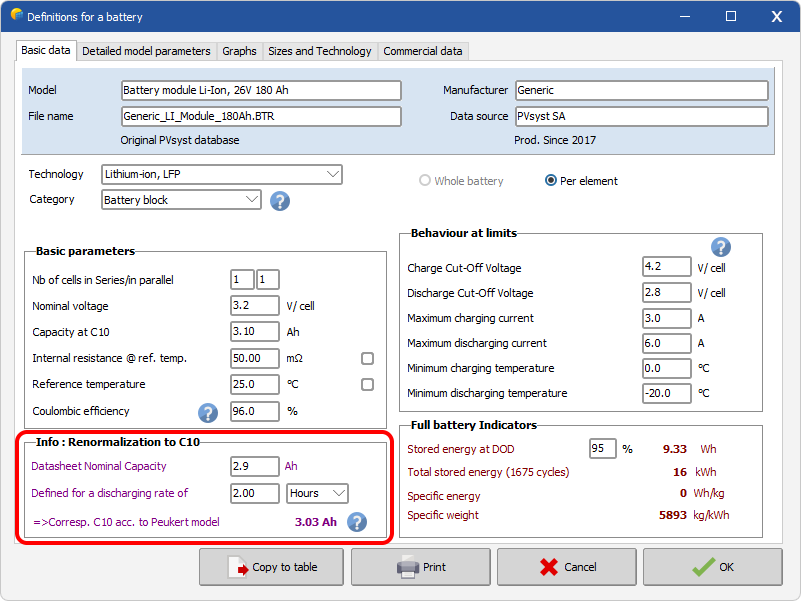|
<< Click to Display Table of Contents >> Lithium-ion : For information |
  
|
|
<< Click to Display Table of Contents >> Lithium-ion : For information |
  
|
For information: capacity definition
Everywhere in PVSyst, the capacity at C10 - defined for 10 hours of discharge rate - is the reference capacity. This capacity usually differs from the Datasheet Nominal Capacity whose definition is highly variable from a manufacturer to another. The key point is that users should be able to easily compare battery capacities, i.e. at a same discharge rate. This is the purpose of the Capacity at C10 parameter.
The usual current range usually involved in PV stand-alone systems is of the order of C20 to C100 (average storage - i.e. charging - in about 4 days).
This is the reason why Lead-acid Solar Battery capacity is often specified as C100, which is 30 to 40% higher than the C10 value !
Inversely, Li-Ion batteries are often used with very high-currents (electric car batteries charged in some few hours, grid storage, etc), so that the capacity is usually specified at C5 or even C2 (full charge or discharge in 5 or 2 hours). However with Li-Ion, the capacity dependency is much lower. It is managed by the Peukert parametrization defined int the "Detailed model parameters" tab.
Therefore this tool allows to calculate the C10 parameter from the Nominal capacity specified on the datasheets, at any rate.
The button "Set Capacity @ C10" will directly set the C10 capacity parameter.
